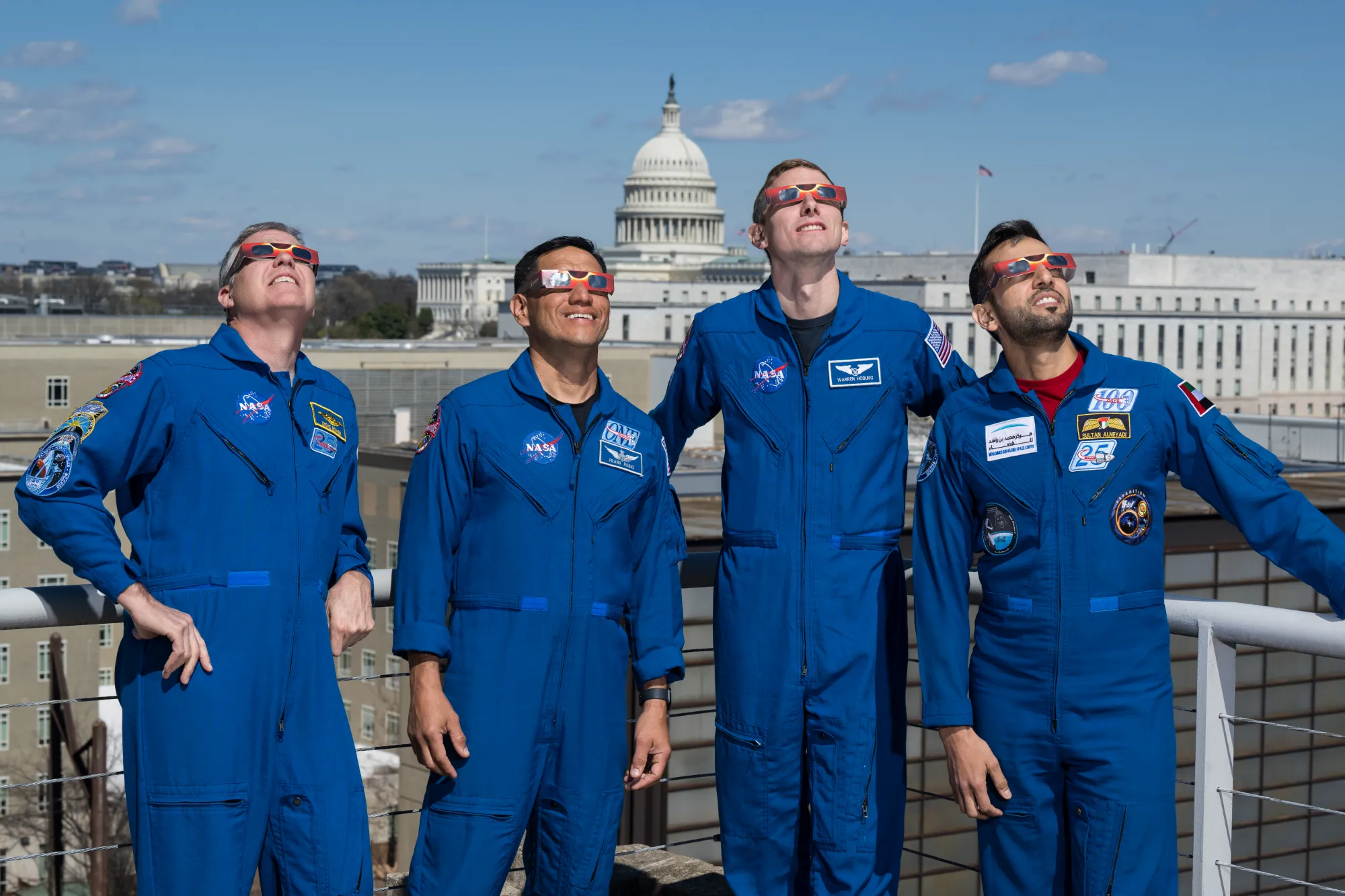While visiting NASA Headquarters in Washington on March 19, 2024, astronauts Stephen Bowen, left, Frank Rubio, Warren Hoburg, and UAE (United Arab Emirates) astronaut Sultan Alneyadi, right, posed for a photo wearing solar viewing glasses (“eclipse glasses”). Eclipse glasses with the ISO 12312-2 international standard or a safe handheld solar viewer are a must-have to look directly at the Sun during the eclipse before or after totality—the brief period where the Moon completely blocks the Sun’s face. Viewing any part of the bright Sun through a camera lens, binoculars, or a telescope without a special-purpose solar filter secured over the front of the optics will instantly cause severe eye injury.
NASA will have live coverage of the total solar eclipse, beginning at 1 p.m. EDT.
Image Credit: NASA/Aubrey Gemignani
2024年3月19日,宇航员斯蒂芬·鲍恩(左)、弗兰克·卢比奥、沃伦·霍伯格和阿联酋宇航员苏丹·阿尔内亚迪(右)在参观位于华盛顿的NASA总部时,戴着太阳观测眼镜(“日食眼镜”)摆出姿势拍照。要想在日全食前后直接观察太阳,必须佩戴符合ISO 12312-2国际标准的日食眼镜,或者使用安全的手持式太阳观测仪。日全食是月球完全遮挡太阳表面的短暂时期。通过相机镜头、双筒望远镜或望远镜观察明亮太阳的任何部分,而光学器件正面没有固定专用的太阳能滤光器,会立即导致严重的眼睛损伤。
NASA将从美国东部时间下午1点开始对日全食进行现场直播。
图片来源:NASA/Aubrey Gemignani







